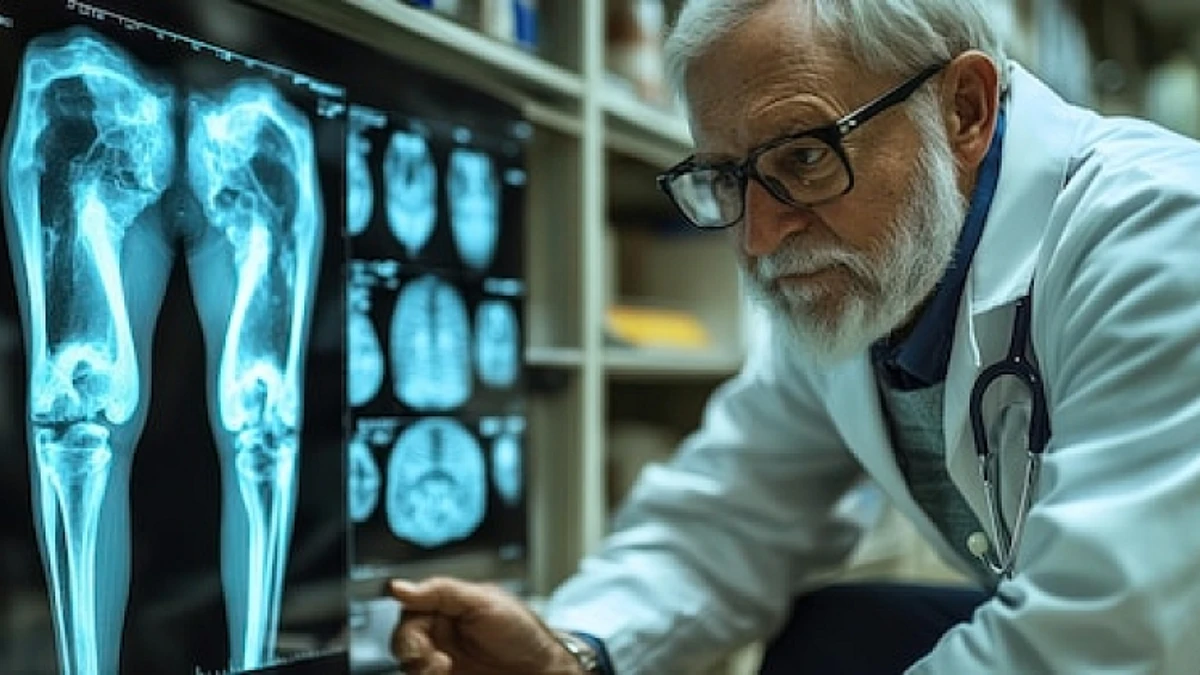Skin cancer, characterized by the abnormal growth of skin cells, often develops on skin exposed to the sun. However, this prevalent form of cancer can also manifest in regions of the skin not ordinarily subjected to sunlight. It includes various types such as basal cell carcinoma, squamous cell carcinoma, and melanoma, among others.
Types of Skin Cancer
There are three major types of skin cancer: basal cell carcinoma (BCC), squamous cell carcinoma (SCC), and melanoma. Early detection through regular skin checks and limiting exposure to ultraviolet (UV) radiation can significantly reduce the risk.
Basal Cell Carcinoma (BCC)
Basal cell carcinoma is the most common type of skin cancer, frequently seen in individuals with fair skin, though it can also affect those with darker skin tones. BCC typically appears as a flesh-colored round growth, a pearl-like bump, or a pinkish patch. This cancer develops due to prolonged sun exposure and often occurs on the head, neck, and arms, but it can appear anywhere on the body.
Squamous Cell Carcinoma (SCC)
Squamous cell carcinoma is the second most common type of skin cancer, often presenting as a red firm bump, a scaly patch, or a sore that heals and reopens. SCC usually occurs on sun-exposed areas like the face, neck, and arms. It can grow deep into the skin, causing damage and disfigurement.
Melanoma
Melanoma is the deadliest form of skin cancer. In fact, often referred to as “the most serious skin cancer,” melanoma can develop within existing moles or suddenly as dark spots on the skin. Therefore, knowing the ABCDE warning signs (Asymmetry, Border, Color, Diameter, Evolving) is needed for early detection and treatment.
Other Types of Skin Cancer
- Dermatofibrosarcoma protuberans (DFSP)
- Merkel Cell Carcinoma
- Sebaceous Gland Carcinoma
Causes of Skin Cancer
Skin cancer primarily arises due to the following factors:
Ultraviolet (UV) Light Exposure
The sun’s UV radiation and UV lights from tanning beds play a significant role in skin cancer development. Other contributing factors include exposure to toxic substances and conditions that weaken the immune system.
DNA Mutations in Skin Cells
Mutations in the DNA of skin cells cause these cells to grow uncontrollably, leading to cancer. These mutations are often the result of UV radiation exposure.
Cells Involved in Skin Cancer
- Squamous Cells: Present just below the outer surface, acting as the skin’s inner lining.
- Basal Cells: Situated beneath the squamous cells, responsible for producing new skin cells.
- Melanocytes: Located in the lower part of the epidermis, these cells produce melanin, the pigment giving skin its color.
Symptoms
Basal Cell Carcinoma Symptoms
- Pearly or waxy bump
- Flat, flesh-colored, or brown scar-like lesion
- Bleeding or scabbing sore that heals and returns
Squamous Cell Carcinoma Symptoms
- Firm, red nodule
- Flat lesion with a scaly, crusted surface
Melanoma Symptoms
- Large brownish spot with darker speckles
- Mole that changes in colour, size, or feel or that bleeds
- Small lesion with irregular border and various colors
- Painful lesion that itches or burns
- Dark lesions on palms, soles, fingertips, toes, or mucous membranes
Symptoms of Less Common Skin Cancers
- Kaposi Sarcoma: Red or purple patches on the skin or mucous membranes
- Merkel Cell Carcinoma: Firm, shiny nodules on or just beneath the skin
- Sebaceous Gland Carcinoma: Hard, painless nodules, often mistaken for other eyelid problems
Risk Factors
- Fair skin
- History of sunburns
- Excessive sun exposure
- Sunny or high-altitude climates
- Many or abnormal moles
- Precancerous skin lesions
- Family history of skin cancer
- Personal history of skin cancer
- Weakened immune system
- Exposure to radiation
- Exposure to certain substances like arsenic
Prevention
Tips for Skin Cancer Prevention
- Avoid the Sun: Especially between 10 a.m. and 4 p.m.
- Wear Sunscreen: Use broad-spectrum sunscreen with an SPF of at least 30.
- Wear Protective Clothing: Dark, tightly woven clothing, broad-brimmed hats, and sunglasses.
- Avoid Tanning Beds: They emit harmful UV rays.
- Be Aware of Sun-Sensitizing Medications: Consult your doctor about any medications that increase sensitivity to sunlight.
Diagnosis and Tests
How is Skin Cancer Diagnosed?
A dermatologist will perform a thorough examination, asking if you’ve noticed any changes in moles, freckles, or other skin spots and will examine your scalp, ears, face, neck, chest, trunk, and other body parts for abnormalities.
What Tests Will Be Done to Diagnose Skin Cancer?
Biopsy
If the dermatologist suspects skin cancer, a biopsy will be performed. This involves removing a sample of tissue to be examined under a microscope by a pathologist. The biopsy will determine if the lesion is cancerous and will identify the type of the cancer present.
Skin Cancer Stages
Cancer stages indicate the extent of cancer in the body. The stages for melanoma and non-melanoma skin cancers differ and range from stage 0 to stage IV.
Melanoma Staging
- Stage 0 (Melanoma in Situ): Melanoma is in the top layer of the skin.
- Stage I: Melanoma is of low risk and has not spread, generally curable with surgery.
- Stage II: Melanoma has features indicating it may recur but has not spread.
- Stage III: Melanoma has spread to nearby lymph nodes or skin.
- Stage IV: Melanoma has spread to distant lymph nodes, skin, or organs.
Non-Melanoma Staging
- Stage 0: Cancer is in the top layer of the skin.
- Stage I: Cancer is in the top and middle layers of the skin.
- Stage II: Cancer targets nerves or deeper skin layers.
- Stage III: Cancer has spread to lymph nodes.
- Stage IV: Cancer has spread to other parts of the body and organs like the liver, lungs, or brain.
Management and Treatment
How Is Skin Cancer Treated?
Treatment varies depending on the cancer stage. Biopsies alone may be sufficient for small, surface-level cancers. Other treatments include:
Cryotherapy
Liquid nitrogen is used to freeze the cancer cells, causing them to die off and slough away.
Excisional Surgery
The tumour and some surrounding healthy tissue are removed to ensure all cancer cells are eradicated.
Mohs Surgery
Only the diseased tissue is removed, preserving as much surrounding healthy tissue as possible. This is especially useful for cancers in sensitive or cosmetically important areas.
Curettage and Electrodesiccation
An instrument with a sharp, looped edge is used to scrape off the tumour, followed by electricity to destroy remaining cancer cells.
Chemotherapy
Medications are used to kill cancer cells. Topical chemotherapy treats skin’s top layers, while systemic chemotherapy treats cancer that has spread.
Immunotherapy
Medications are administered to stimulate the immune system to attack cancer cells.
Radiation Therapy
Radiation is used to kill cancer cells or stop them from growing and dividing.
Photodynamic Therapy
Medication-coated skin is activated by light to destroy precancerous cells.
Complications/Side Effects of Treatment
Side effects may include bleeding, pain, swelling, scars, nerve damage, infection, and tumour regrowth.
Skin Cancer in Different Demographics
Age Groups
Children and teenagers are less prone to skin cancer, but severe sunburns during these years increase the risk later in life. Seniors have a higher incidence due to cumulative sun exposure.
Gender Differences
Men are more likely to develop skin cancer on their trunks, while women commonly develop it on their lower legs. Both genders should follow preventive measures vigilantly.
Ethnicity
Fair-skinned individuals have a higher risk of skin cancer, though people with darker skin can also develop it, often in less exposed areas. Understanding these nuances is crucial for tailored prevention strategies.
Non-Sunlight Causes of Skin Cancer
Genetic Predisposition
Individuals with a family history of skin cancer are at increased risk, indicating the role of genetics in this cancer development.
Toxic Substances
Exposure to chemicals such as arsenic can increase the risk of developing cancer. Occupational safety is paramount in reducing this risk.
Immune System Disorders
People with weakened immune systems, such as those with HIV/AIDS or transplant recipients on immunosuppressants, have a higher risk of this cancer.
Innovative Skin Cancer Treatments
Immunotherapy
Recent advancements in immunotherapy have shown promise in treating advanced melanoma by harnessing the body’s immune system to fight cancer cells.
Targeted Therapies
Targeted therapies work by attacking specific molecules involved in the growth and spread of cancer. These personalized treatments are more effective and have fewer side effects.
Personalized Medicine
Genetic profiling of tumours allows for customized treatment plans, improving outcomes and tailoring therapy to individual patient needs.
Impact of Climate and Geography on Skin Cancer
Climate Influence
People living in sunny, high-altitude areas are exposed to more UV radiation, increasing cancer risk. Protective strategies should be emphasized in these regions.
Geographical Variations
Incidence of skin cancer varies globally due to differences in sun exposure, skin types, and cultural practices. Region-specific prevention tips can be highly effective.
Psychological and Emotional Aspects
Impact of Diagnosis
A skin cancer diagnosis can evoke significant emotional distress. Support networks and counselling can be vital for mental well-being.
Coping Strategies
Mindfulness, support groups, and therapy can help patients cope with the psychological burden of a cancer diagnosis and treatment.
Skin Cancer in Pets
Occurrence in Pets
Skin cancer can also affect pets, particularly dogs and cats. Owners should look for symptoms such as lumps or sores that do not heal.
Prevention and Treatment
Protecting pets from excessive sun exposure and seeking veterinary care
complete it
Historical Perspective
Ancient Times
The understanding and treatment of this cancer have evolved significantly since ancient times when it was often misdiagnosed and treatments were rudimentary.
Modern Advancements
Recent decades have seen tremendous advancements in dermatology, from the development of less invasive surgical techniques to breakthroughs in targeted therapies and immunotherapy.
Conclusion
At Avicenna, we believe in empowering our patients with knowledge and resources. Moreover, we are dedicated to staying at the forefront of skin cancer research and advancements, ensuring our patients have access to the most effective and innovative care available. Indeed, early detection is crucial for effective treatment. For any concerns or treatment of skin cancer in Turkey, please contact us to schedule an appointment with our specialists.
It can appear as new or changing skin spots, moles, sores that don’t heal, and lesions with irregular borders and varied colours.
Many skin cancers can be cured, especially when detected and treated early.
This cancer, particularly melanoma, can be a serious and potentially life-threatening condition if not detected and treated promptly.







